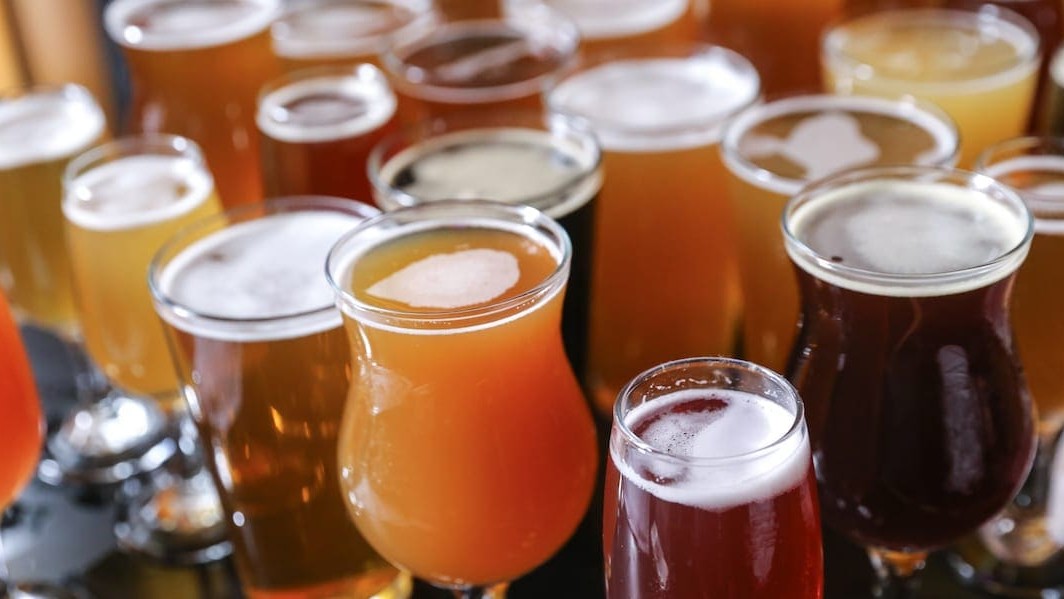You see it scrawled on chalkboards next to the names of beers at your favorite craft brewery: ABV, or alcohol by volume.
In the purest sense, ABV means exactly what you would think: it’s the percentage of your beer that’s made up of alcohol. And you guessed it, the higher the number, the faster you’ll feel a buzz.
But it’s not just about getting that warm fuzzy feeling. ABV has a direct impact on how your favorite brew tastes, and it can be manipulated with mind-boggling accuracy.
How ABV affects the taste of beer
“Traditionally, ABV was a way to preserve beer for long journeys,” says David Lin, founder and owner at Comrade Brewing in south Denver.
This is why IPAs, short for India Pale Ale, tend to land higher on the ABV spectrum. It was too hot to brew in India — at least according to the British — so colonists and travelers had to bring beer with them.
In the late 1700s and early 1800s, it was an arduous six-month trek to reach India from Britain, so brewers packed on the hops and pumped up alcohol levels to ensure the beer would last through the journey.
Not only did the beer make it, turns out it tasted great, too.
“Some of the compounds in an IPA are alcohol soluble,” says David. “You get a little bit of benefit for IPAs with higher alcohol levels compared to other styles.”
Alcohol has a lower viscosity than the sugary wort produced during the brewing process, which allows the hops and flavors of an IPA-style beer to stand out.
“The higher alcohol beers can be more bitter, which can be a good thing depending on the style you’re going for,” Lin explains.
But, once you start playing with ABV levels near or above double digits, things start to break down.
“High levels of ABV, past 10 percent, almost have a desensitizing effect on the taste buds,” David says. “That’s why styles like imperial stouts, which can get up to 10 to 12 percent ABV, might have fun things added to make it extra flavorful.”
How brewers control ABV
“The very first part is the mashing process,” David says. “We mix hot water with malted grains, which activates enzymes to turn the starch from the grains into sugar.”
That sugar is key to managing ABV, considering alcohol in beer is created by yeast eating up sugars. Essentially, alcohol is a byproduct of the yeast, so brewers at Comrade and other breweries can manage how easy or difficult it will be for yeast to consume the sugars, which will ultimately bring out different flavors and qualities in the finished brew.
“We can make more fermentable beer by mashing at lower temperatures. If we mash at 149 degrees Fahrenheit, that will help to break down more of that starch into simple sugars for the yeast to ferment,” David says.
That means the yeast will have an easier time eating up those sugars, bringing out those bitter notes.
“For a full-body barleywine, where you want residual sweetness, we mash at a higher temperature,” Lin explains. “That leaves you with more of the starch. Yeast can’t break down that starch, so there’s less activity, meaning less fermentability, which leaves more sweetness.”
Selecting the right yeast strain will also have a big impact on where the final ABV percentage winds up during the fermentation process. Brewers have to manage the relationship between sugars and starches from the grains, and how the yeast converts those into alcohol during fermentation to get the desired outcome.
A consistent and exact science
Homebrewers might be used to working with grains in the tens to teens of pounds when mashing. At Comrade, they might be using anywhere from 750 pounds to 1,100 pounds of grains for a single batch, depending on the style of beer they’re going for.
Yet, even with that much product, they can get ABV levels exactly where they want it and do it with consistency.
“We can generally get ABV exactly where we want it,” David says.
It all starts with measuring everything. David says they measure the gravity of the beer, which helps to determine the amount of sugar in the wort, throughout the entire process to ensure they’ve got it exactly where they need it. If they need to make adjustments, they can do things like add deareated water.
Even from batch to batch, this all ensures that the ABV is consistent every time.
You gotta have style
“We look for a good balance with hop flavor, bitterness, sweetness, dryness and overall just a good beer flavor,” David says.
Sometimes that means higher ABV, sometimes it doesn’t, depending on the style.
But, he says “as brewers, a lot of these styles are beers that brewers want to drink. If you’re brewing and drinking beers all day, you want to be able to get all the flavor without getting knocked out.”
Suggested Reading:
While David doesn’t necessarily see any trends developing in terms of ABV, he does see more beers popping up that pack a flavorful punch while still allowing you to drive home.
High alcohol volume was originally a practical approach for beer to make it on long journeys. Today, we have craft breweries right in our backyard, not to mention more sophisticated travel options, so ABV has become another tool in brewers’ toolboxes that’s more about bringing out flavors and qualities.
When it comes down to it, it’s all about style. And as long as local breweries keep putting out those tasty brews, you won’t hear any complaints from us.
David Lin is founder and owner at Comrade Brewing Co.

